Fox News Flash top headlines for February 22
Fox News Flash top headlines are here. Check out what's clicking on Foxnews.com.
The green anaconda, an aquatic snake often found in South America's Amazon region, is the largest of its kind — measuring nearly 21 feet in length, according to experts.
Now, the snake behemoth has been identified as two separate species — the northern green anaconda and southern green anaconda — after researchers initially assumed it was only one.
A study published in the journal MDPI Diversity used genetic data from four recognized anaconda species across nine countries.
STINGRAY'S ‘VIRGIN’ PREGNANCY: HOW SOME SPECIES CAN GET PREGNANT WITHOUT MATING
Explorers and researchers found that the northern green anaconda is "genetically distinct" from its southern relative by 5.5%.
By comparison, humans and chimpanzees differ only by 2%.
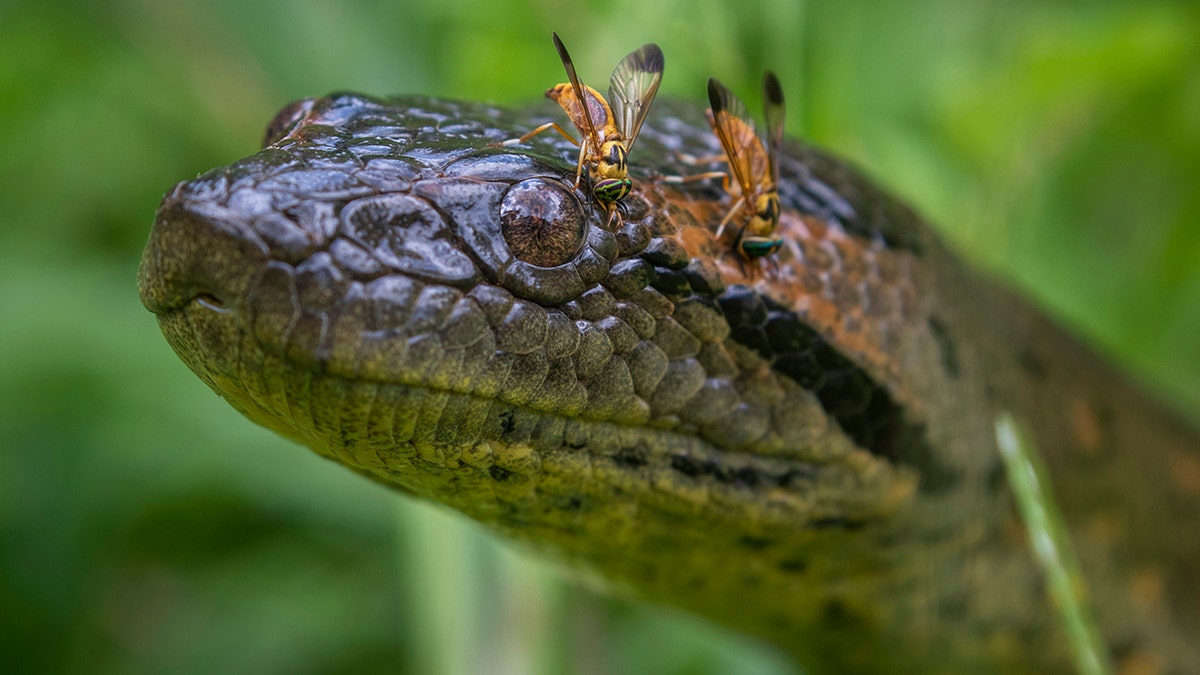
Botflies perch on the head of a northern green anaconda in Yasuni National Park in Ecuador. A recent study revealed that the green anaconda is two distinct species, more genetically diverse than humans and chimpanzees. (Karine Aigner/Naturepl.com)
The researchers took blood and tissue samples from green anacondas in Ecuador, Venezuela and Brazil to make this discovery, which was documented exclusively by National Geographic for its upcoming series "Pole to Pole: With Will Smith."
KANSAS FISHERMAN'S CRAPPIE RECORD REMOVED AFTER STEEL WEIGHTS ARE FOUND IN FISH'S STOMACH
The snakes were also closely examined to count their scales and record other physical traits that indicated "evolutionary divergence," NatGeo reported.
"It's clear that the snakes in the Waorani lands are indeed the biggest of all anacondas."
Study co-author Bryan Fry — a National Geographic explorer and a biologist at the University of Queensland in Australia — told Fox News Digital in an email that the key species difference is geographic range.
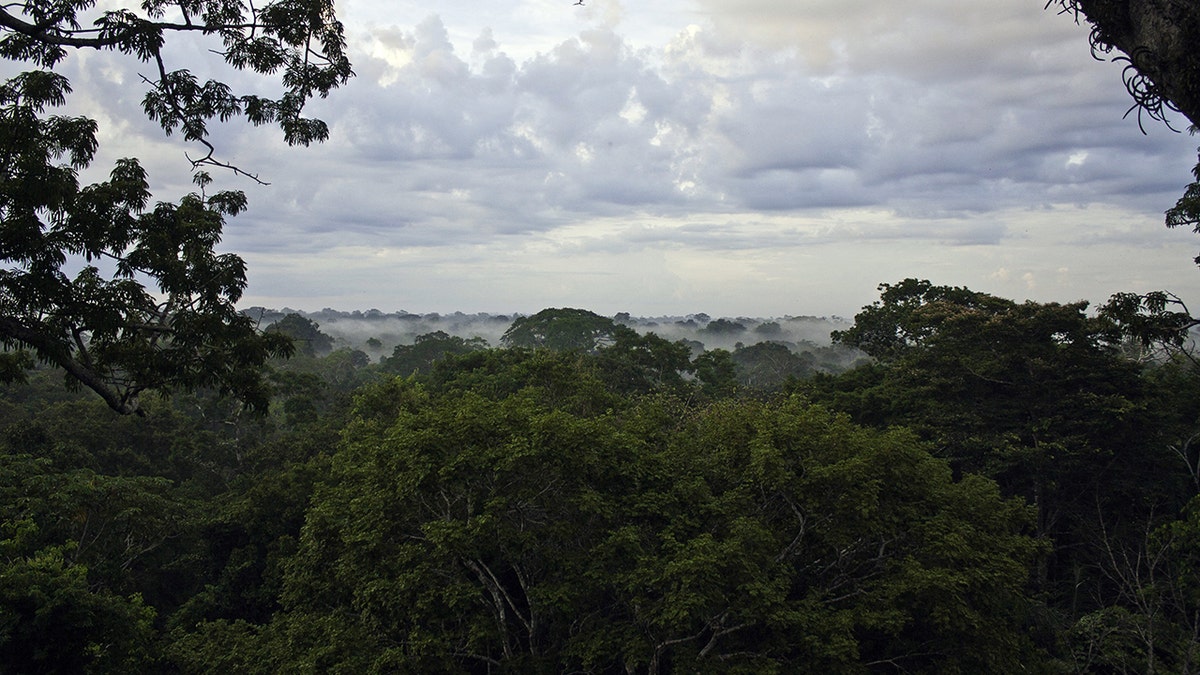
The researchers took blood and tissue samples from green anacondas in Ecuador (pictured), Venezuela and Brazil to make their discovery. (PABLO COZZAGLIO/AFP via Getty Images)
The Amazon is made up of two separate basins — the large southern Amazon basin and the "much smaller" northern Orinoco basin.
"The southern green anaconda (Eunectes murinus) is found across a vast range spanning Brazil, Bolivia, Perú and parts of French Guiana," he said.
"By contrast, our newly described northern green anaconda (Eunectes akayima) is restricted to Colombia, Ecuador, Guyana, Suriname, Trinidad, Venezuela and parts of French Guiana."
WORLD'S LARGEST, RAREST OCEAN STINGRAYS SPOTTED AND TAGGED IN MOZAMBIQUE
The new northern green anaconda can also reach larger sizes, researchers found.
"The Ecuadorian eastern rain forest has long been rumored to hold the largest of all anacondas, but until our expedition with Will Smith for National Geographic’s ‘Pole to Pole’ series, this had never been investigated," Fry said.
"Not only because the area is so incredibly remote, but also because it’s the autonomous lands of the Waorani indigenous people."
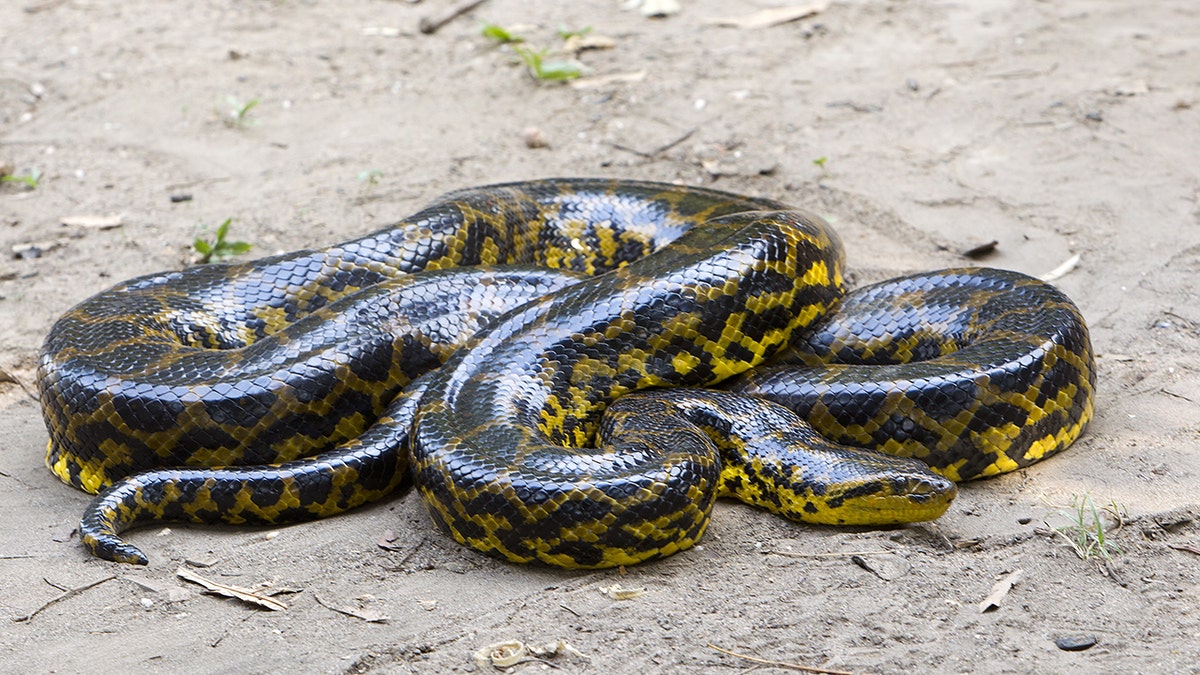
A green anaconda is photographed in Brazil, Mato Grosso. The newly discovered northern green anaconda can reach larger sizes, researchers found. (Sylvain CORDIER/Gamma-Rapho via Getty Images)
While scoping out the area, Fry noted that the size of the snakes "didn’t disappoint."
The largest anaconda they encountered measured 6.3 meters, or 20.6 feet long, and weighed about 793 pounds.
TEXAS ZOO WELCOMES THIRD GORILLA IN 115 YEARS AFTER DOCTORS PERFORM EMERGENCY DELIVERY
"But the Waorani regularly see snakes much larger than that," Fry said. "They’ve seen snakes they reckon were over 8 meters and 800 kilograms. So, it's clear that the snakes in the Waorani lands are indeed the biggest of all anacondas."
Fry called the expedition into the heart of the Amazon a "true cross-cultural endeavor."
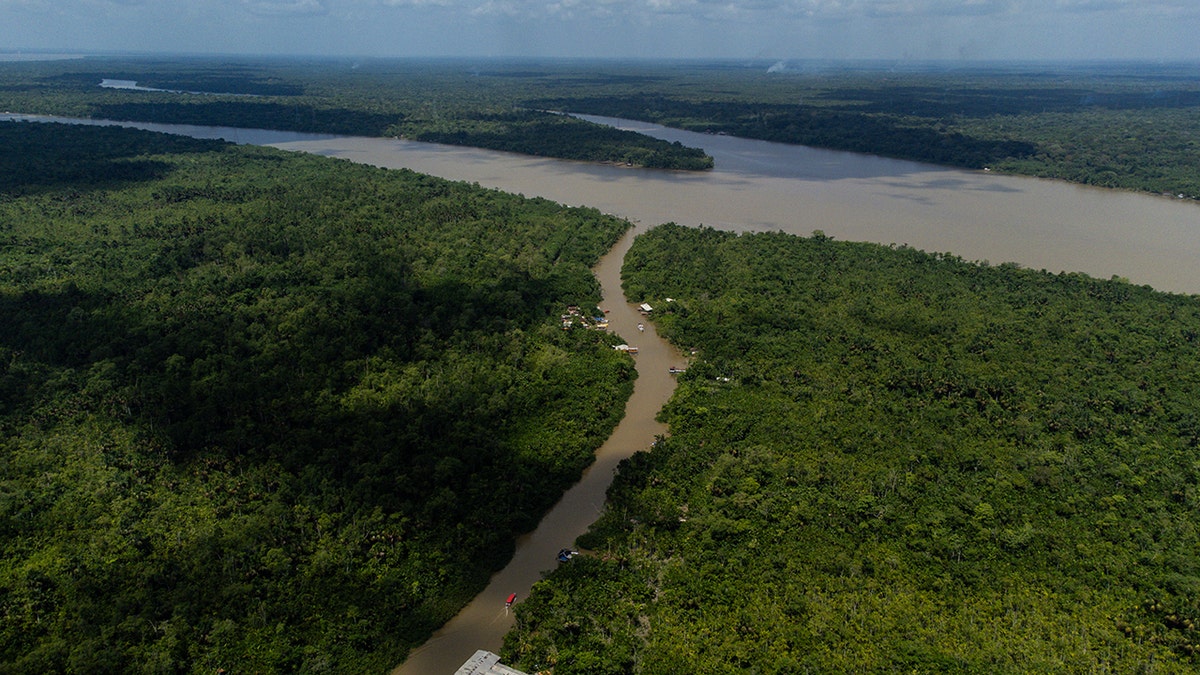
Pictured is a view of the Guama River and the Amazon rainforest in Belem, Brazil, which was an area involved in the research. (Filipe Bispo Vale/picture alliance via Getty Images)
The explorer was invited by Waorani Chief Penti Baihua to enter the Baihuaeri Waorani Territory in the Ecuadorian Amazon for this research.
The invitation was reportedly "one of only a handful granted since the tribe’s first contact in 1958," according to Fry.
"It was a real honor."
Fry and the Waorani collaborators were recognized as co-authors in the journal publication of the study, which Fry considers a "career-defining moment."
"[It’s] a testament to the surprises that the natural world still holds," he said.
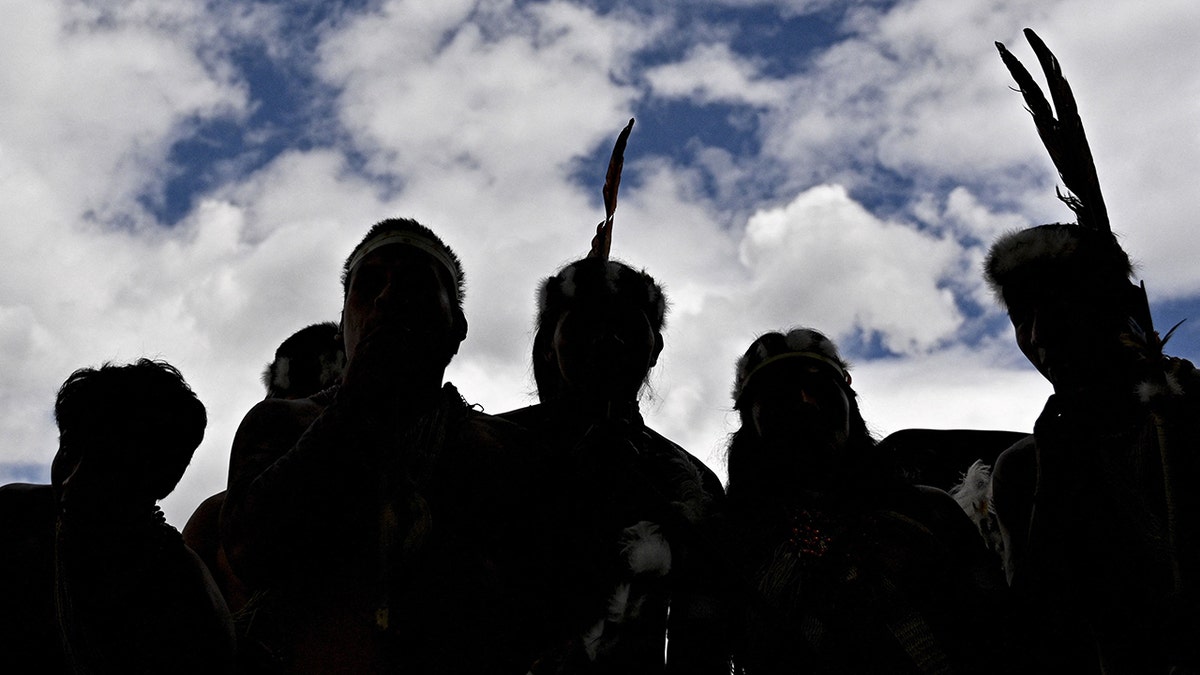
Members of the Waorani indigenous community are pictured during a demonstration in the Yasuni National Park in Aug. 2023. Fry was invited by Waorani Chief Penti Baihua to enter the Baihuaeri Waorani Territory in the Ecuadorian Amazon for this research. (MARTIN BERNETTI/AFP via Getty Images)
"The success of this expedition and the inclusion of Waorani as equal partners really underscores the essence of what it means to be an explorer," he added.
The Amazon offered a "kaleidoscope of challenges and wonders," Fry said, including the surroundings of "dense canopy above … and the rivers below, serpentine paths cutting through the darkness of the jungle floor."
CLICK HERE TO SIGN UP FOR OUR LIFESTYLE NEWSLETTER
"Our expedition was marked by the relentless heat, the omnipresent swarm of insects, and the symphony of the wild that crescendoed into the night," Fry said.
"I like nothing better than being overheated and underwashed while wading through swamps in search of giant snakes."

A naturalist guide grabs an anaconda in the Llanos swamps in Venezuela. (Gilles MARTIN/Gamma-Rapho via Getty Images)
The discovery also "serves as a stark reminder of the threats faced by the Amazon, including deforestation, habitat degradation, climate change and oil spills, which place this new species and the entire ecosystem in jeopardy," Fry went on.
Although this discovery was a breakthrough, Fry said the team's work in the Amazon is "far from complete," as it continues to study the impact of frequent oil spills in the region.
"Our expedition was marked by the relentless heat, the omnipresent swarm of insects, and the symphony of the wild that crescendoed into the night."
"Our future expeditions will focus on the collection and analysis of soil, water and biological samples, employing cutting-edge techniques to trace the pathways of these contaminants," he said.
CLICK HERE TO GET THE FOX NEWS APP
More on this discovery can be found at natgeo.com.
For more Lifestyle articles, visit www.foxnews.com/lifestyle.





















